The aerial ballet of birds has long captured the imagination of humans, invoking a sense of wonder and envy for their graceful maneuvers.
Among the myriad of flight skills displayed by birds, the question of whether they can fly backward stands as a testament to their remarkable adaptability. While the physics of flight seems to dictate that moving backward would be challenging, certain avian species possess an ingenious ability to defy this limitation.
The notion of birds flying backward challenges our understanding of aerodynamics and showcases the specialized adaptations that have evolved in the natural world.
By exploring whether can birds fly backward, we gain insights into the intricate interplay between biology, physics, and evolution.
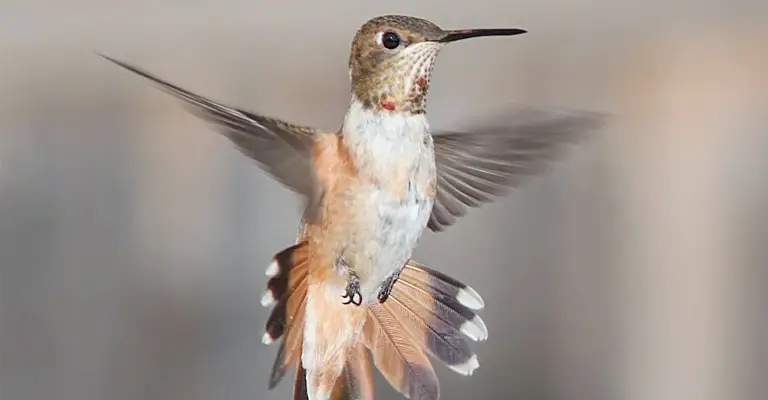
Can Birds Fly Backward?
Birds that can fly backward are rare and fascinating creatures. They have evolved particular adaptations that allow them to maneuver in reverse, such as flexible wing joints, powerful muscles, and complex wing movements.
Here are some scientific explanations for how and why some birds can fly backward:
Unique Wing Structure
Hummingbirds are the only birds that can fly backward for a substantial amount of time.
This is because their wings have a ball and socket joint that allows them to move their wings up, down, backward, and forward.
They can also rotate their wings to form a figure of eight, which creates lift on both the upstroke and the downstroke.
This gives them the ability to hover and perform acrobatic manoeuvres in the air.
Strong Chest Muscles And A Large Heart
Hummingbirds have the largest pectoral muscles relative to their body size among all birds.
These muscles contract and relax rapidly to move their wings at high speed, up to 80 times per second.
Hummingbirds also have a large heart that pumps blood to their muscles and wings, enabling them to sustain their high-energy flight.
Backward Flight
Hummingbirds are often threatened by larger birds, such as hawks, that try to catch them in mid-air.
To avoid being captured, hummingbirds can quickly change direction and fly backward, making them unpredictable and hard to follow.
Hummingbirds also use backward flight to defend their feeding territories from other hummingbirds or insects that compete for nectar.
Nectar Bats Are The Only Mammals That Can Fly Backward:
Nectar bats are a group of bats that feed on nectar from flowers, similar to hummingbirds.
They have evolved convergent adaptations that allow them to hover and fly backward, such as long tongues, elongated snouts, and flexible wings.
Nectar bats use backward flight to access flowers that are hidden or hard to reach, as well as to escape from predators or rivals.
For A Short Distance As A Defensive Strategy:
Birds such as herons, egrets, warblers, and flycatchers can fly backward for a few seconds or meters when they are startled or threatened by predators or intruders.
They use this technique to create distance and gain time to escape or attack.
These birds have less flexible wings than hummingbirds or nectar bats, so they cannot sustain backward flight for long.
When They Face Strong Headwinds:
Birds such as cuckoos can seem to fly backward when they encounter gusts of wind that push them back while they try to move forward.
This is an illusion caused by the relative motion of the bird and the air, as the bird is still flying forward with respect to the airflow.
This phenomenon can also occur when birds fly near waterfalls or cliffs where the air currents are turbulent.
Imitating Other Birds Or Humans:
Birds such as parrots and crows are known for their intelligence and ability to mimic the sounds and behaviours of other animals or humans.
Some of these birds can learn to fly backward by observing and copying other birds that can do it naturally, such as hummingbirds or nectar bats.
Some can also learn to fly backward by following human gestures or commands, such as pointing or saying “back”.
Which Birds Can Fly Backward?
Certainly, here’s a breakdown with descriptions for each point:
Hummingbirds
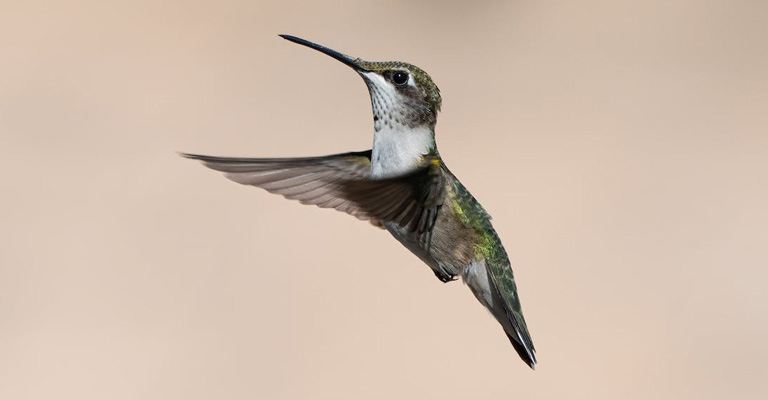
Hummingbirds are perhaps the most well-known birds that can fly backward. Their unique wing structure and rapid wing beats enable them to hover in mid-air and maneuver with precision.
They can fly in any direction, including backward, which is particularly advantageous for accessing nectar from flowers.
Helicopter Damselfly
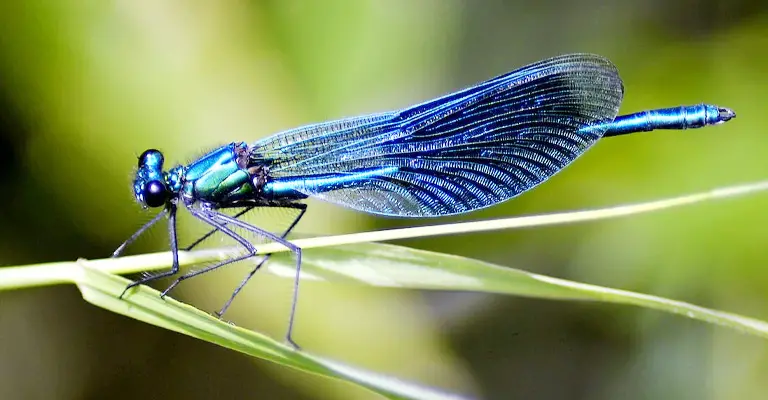
While not a bird, the helicopter damselfly exhibits a helicopter-like flying ability. It can hover, fly forward, backward, and even sideways.
This insect’s ability to maneuver in various directions makes it an exception in the insect world and somewhat resembles the backward flight of hummingbirds.
Swifts
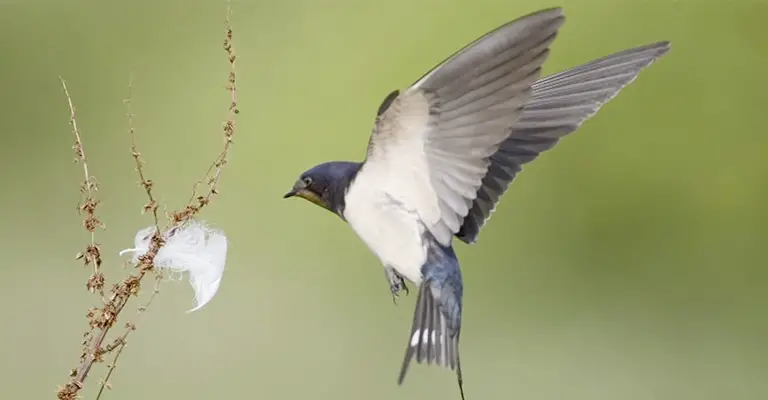
Swifts are agile birds known for their exceptional aerial skills. While they may not fly directly backward like hummingbirds, they can fly backward indirectly through a series of quick turns and maneuvers.
These rapid and intricate movements enable swifts to navigate through complex environments with ease.
Kingfishers
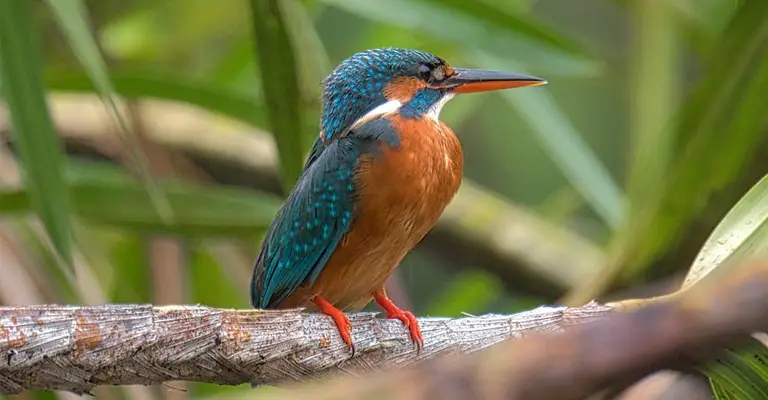
Some kingfisher species exhibit hovering behavior when hunting for fish. While they don’t fly backward in the same way as hummingbirds, they can exhibit short bursts of reverse flight while maintaining their position above water.
Pigeons
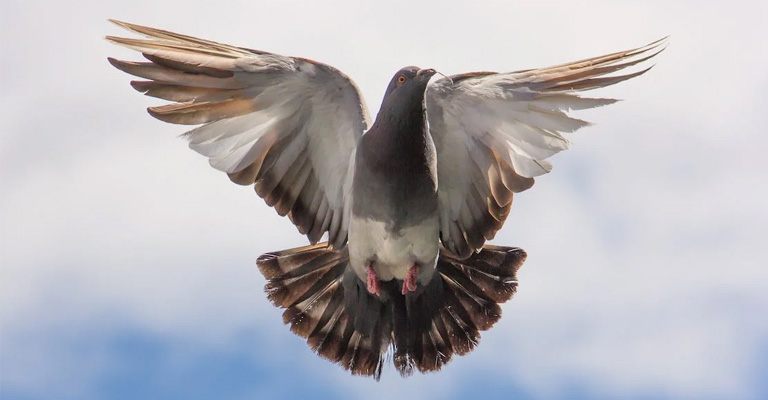
Pigeons are known to perform brief moments of backward flight during courtship displays or when engaging in aerial acrobatics.
Although not as refined as the hummingbird’s backward flight, pigeons can exhibit a limited form of this maneuver.
Sunbirds
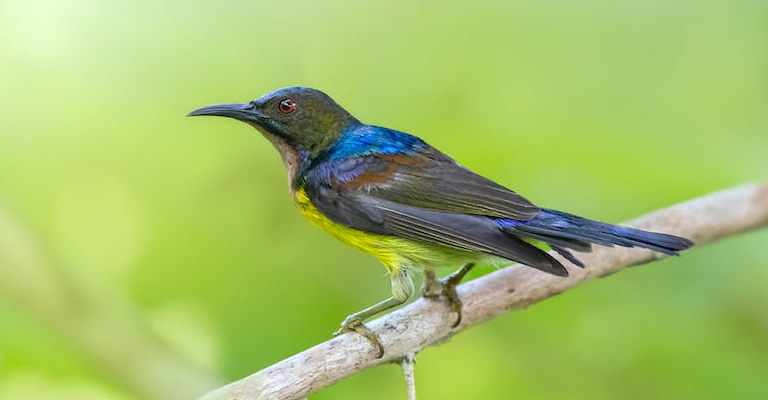
Similar to hummingbirds, certain sunbird species possess adaptations for hovering and flying in various directions, including backward.
Sunbirds are found in regions like Africa, Asia, and Australia and have evolved unique flight abilities to access nectar-rich flowers.
Sparrowhawks
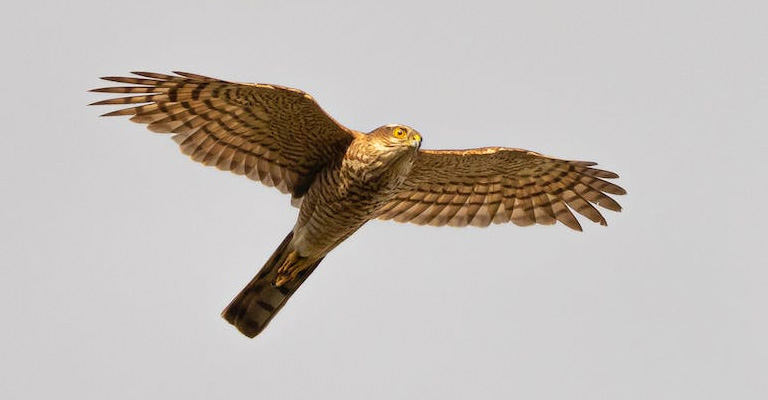
Sparrowhawks are known to display impressive aerial agility, which includes the ability to fly backward briefly while chasing prey.
This skill demonstrates the precision and control these birds have over their flight movements.
These examples highlight the incredible diversity of the avian world and how different species have evolved distinct adaptations for flight, including the ability to fly backward in various ways.
How Does A Bird Balance On A Branch?
Certainly, here’s a breakdown with descriptions for each point:
Anatomy of Bird Feet
A bird’s ability to balance on a branch is closely tied to the anatomy of its feet. Most birds have a unique arrangement of toes that aid in gripping branches securely.
The arrangement typically includes three forward-pointing toes and one backward-pointing toe, which helps provide a firm grasp on perches.
Flexing Tendons and Ligaments
The tendons and ligaments in a bird’s legs are highly specialized for balance. When a bird lands on a branch, its legs automatically flex, and its toes curl around the perch.
This mechanism is similar to a spring-loaded action, ensuring a tight grip even when the bird’s muscles are relaxed.
Counteracting Instability
Birds’ bodies have a high center of gravity due to their lightweight and often top-heavy build.
To counteract this, birds use their tails and wings for balance. Adjusting the position of their wings or tail feathers helps them maintain stability and prevent tipping off the perch.
Perch Choice
Birds often select perches that match their body size and weight. Choosing a suitable perch minimizes the effort required to maintain balance.
Larger birds may opt for thicker branches, while smaller birds might prefer narrower perches that allow them to wrap their toes around securely.
Active Corrections
Birds constantly make small adjustments to their posture and grip to maintain balance.
This might involve shifting their weight, changing the angle of their feet, or subtly moving their wings or tail feathers. These micro-adjustments help them adapt to changing conditions and prevent falls.
Wind Adaptation
Birds also adapt to external factors like wind. They spread their wings slightly to catch the wind and create a counteracting force that stabilizes their position on the perch, helping them remain balanced even in gusty conditions.
Learning and Practice
Balancing is a skill that birds learn and refine through practice. Juvenile birds spend considerable time practicing perching and balancing on various surfaces as they develop their coordination and adapt to their environment.
These intricate mechanisms and adaptations illustrate the marvel of avian anatomy and behavior, demonstrating how birds are exquisitely equipped to navigate and thrive in their arboreal habitats.
FAQ
Yes, some birds, particularly hummingbirds, have the unique ability to fly backward. Their rapid wing movements and specialized wing joints allow them to hover and maneuver in any direction, including backward.
Hummingbirds achieve backward flight through their rapid wing beats, which create a lift and thrust cycle that allows them to hover and move in reverse. Their wing joints enable them to change the angle of their wings quickly.
No, most birds cannot fly backward due to the constraints of their wing structure and flight mechanics. Only a few species, notably hummingbirds, have the physiological adaptations necessary for this maneuver.
Hummingbirds feed on nectar from flowers, and their ability to hover and fly backward is crucial for accessing nectar from all angles of a flower.
This specialized skill helps them access food efficiently.
Hummingbirds are also known for their rapid changes in direction, hovering in mid-air, and flying upside-down.
These maneuvers are enabled by their unique wing anatomy and high metabolic rate, which provides the energy needed for such agile flight.
Conclusion
In the enchanting world of avian flight, the ability of some birds to fly backward adds a layer of intrigue to their already impressive repertoire of maneuvers.
Hummingbirds, renowned for their agility and hovering skills, can indeed fly in reverse due to their unique wing structure and rapid wing beat.
This remarkable feat is a testament to the remarkable adaptations that have evolved in response to specific ecological niches.
While most birds are bound by the constraints of aerodynamics, these exceptions remind us of the boundless diversity of life’s solutions.
The ability of birds to fly backward offers a glimpse into the harmonious blend of biology and physics that underpins the breathtaking aerial displays of the avian world.